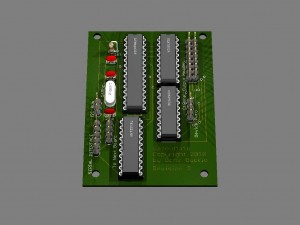(Read the prior blog entry to this for details on the projector stands)
After completing the projector stands it was time to finally use the damn things! 🙂
Because of the flexibility of modern games and the popularity of “triple head gaming”, new games like Need for Speed: Shift support the resolutions that can be found using a TripleHead2Go. In my case that’s 3072×768 because I’m using three 1024×768 projectors.
My friend Dave is a nut for this game and I finally understand why. It’s insanely fun to play on a 180 degree wraparound display. 😀
